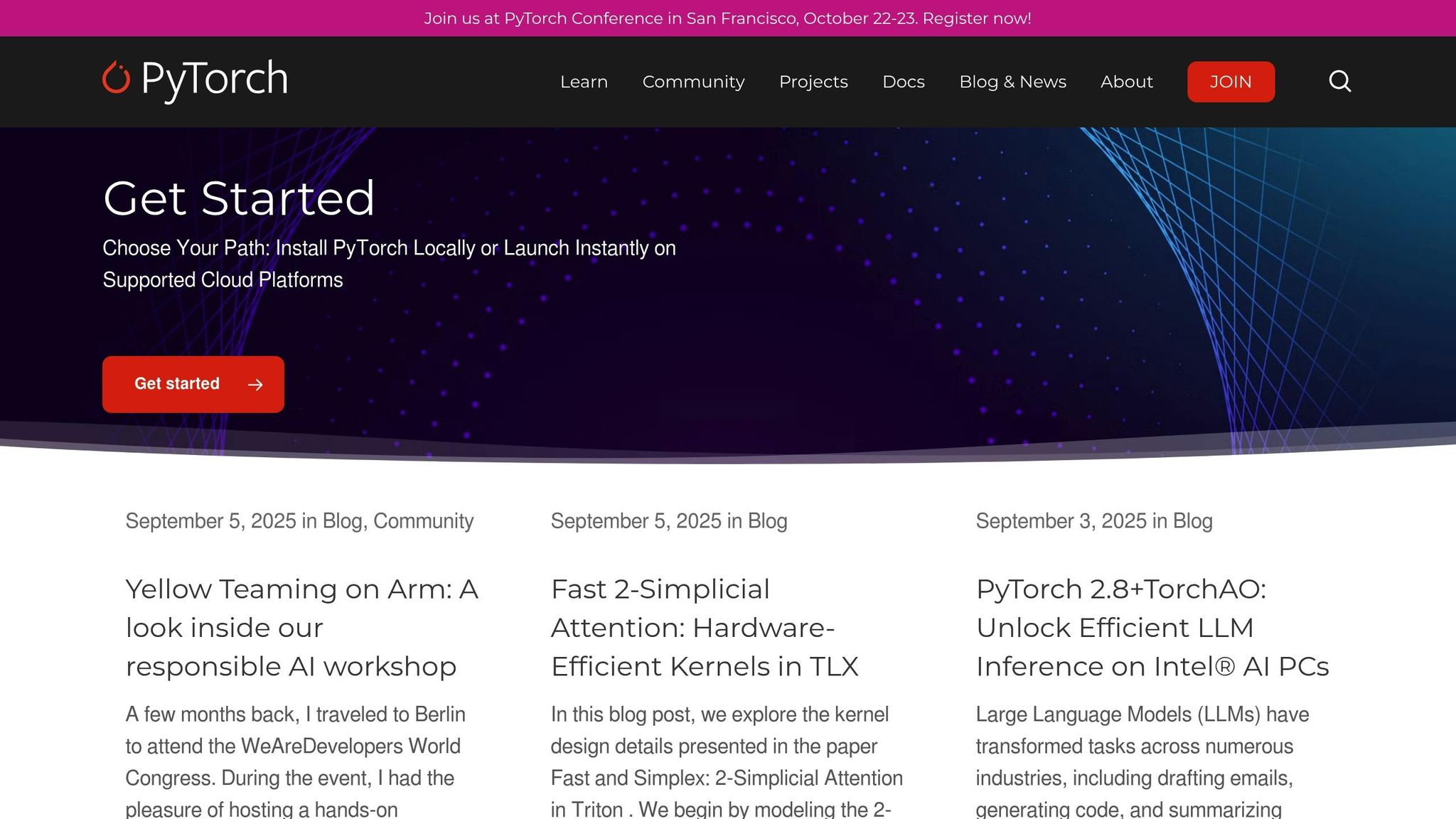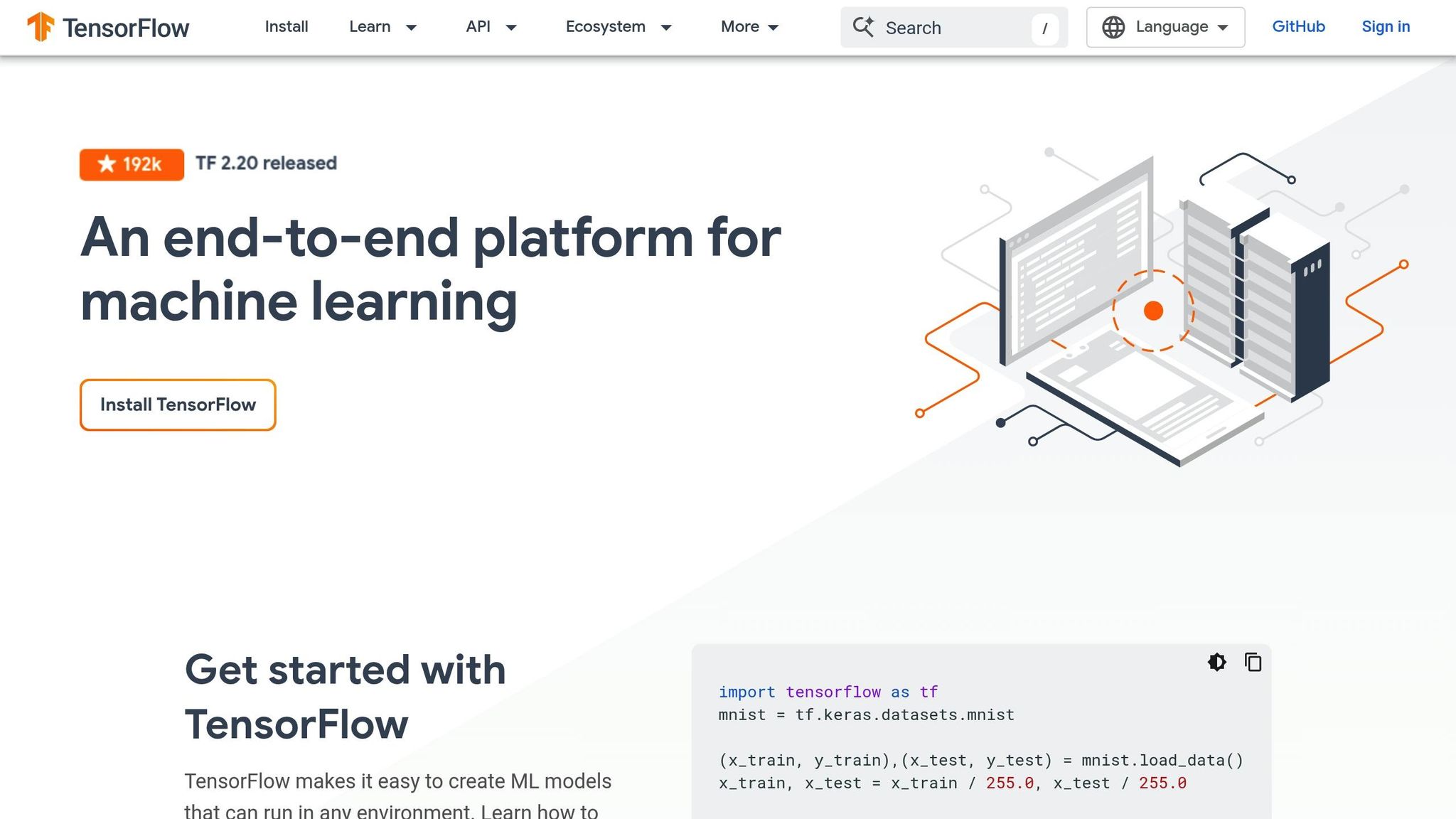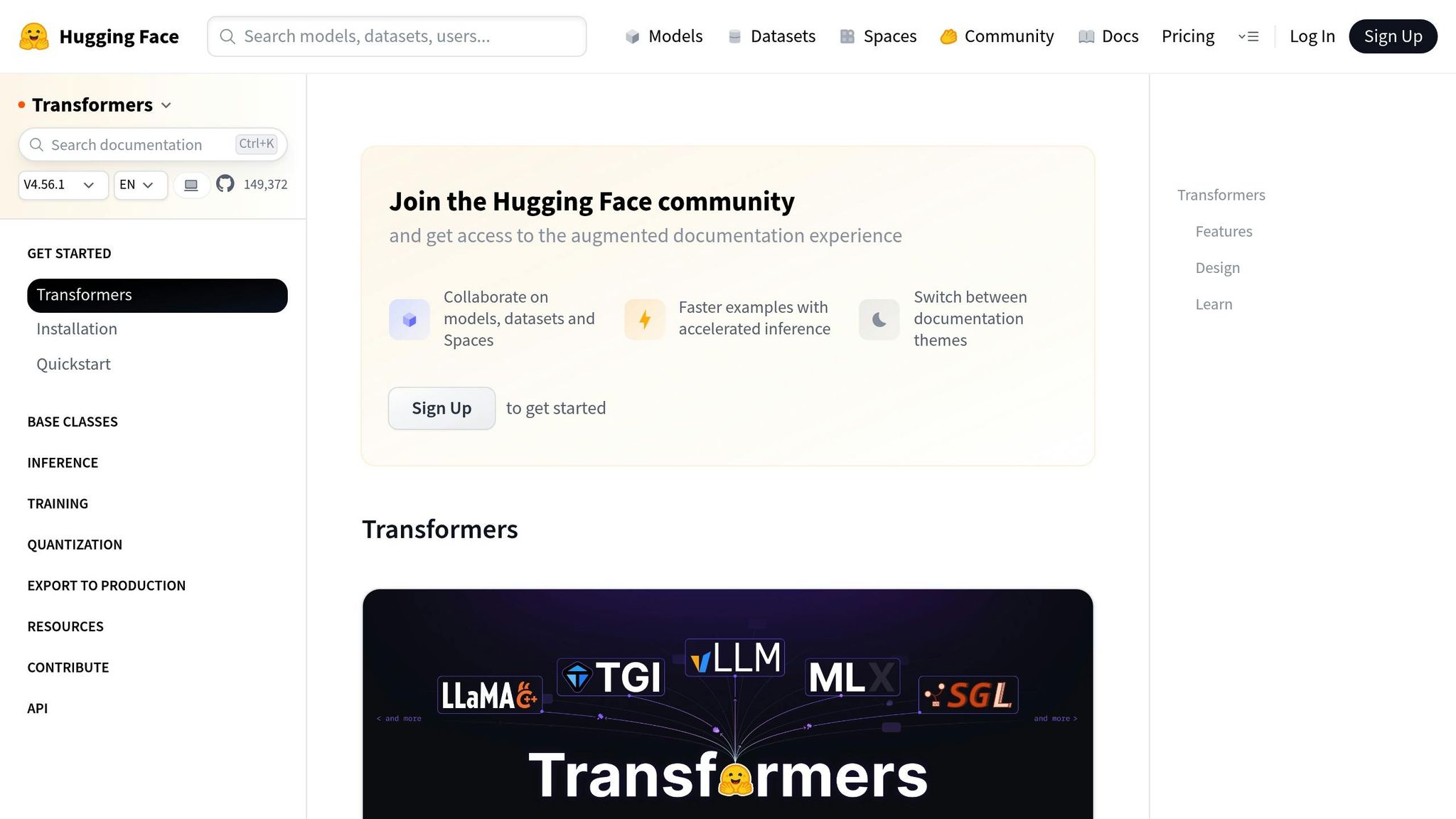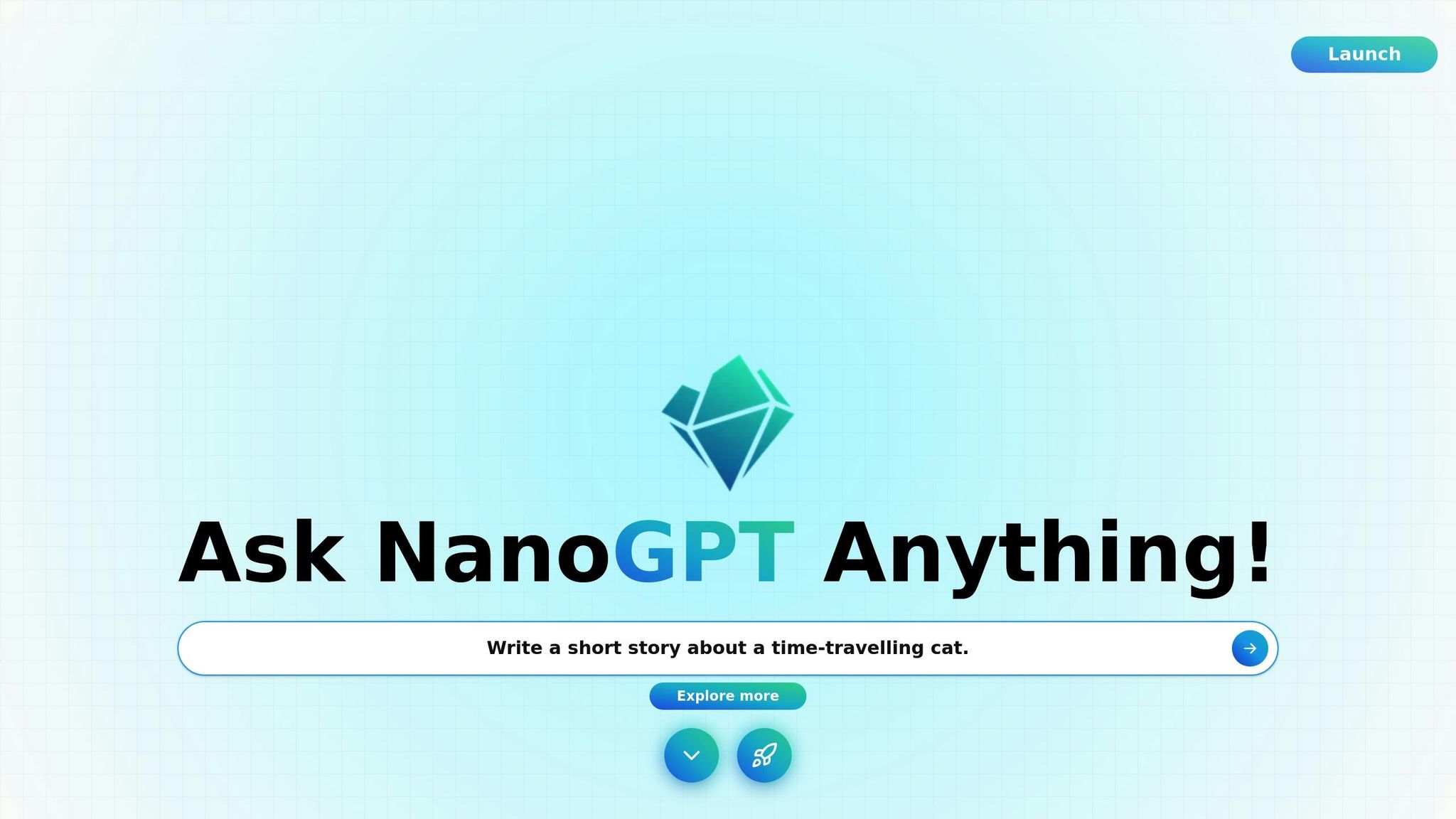Sep 10, 2025
Variational Autoencoders (VAEs) are widely used for generating images due to their ability to create realistic and diverse outputs. They work by encoding input images into a compact latent space and decoding them back into image form, leveraging probabilistic modeling to capture patterns and variations. If you're exploring VAEs, here are the top tools and platforms to consider:
torch.distributions.| Tool/Platform | Ease of Use | Customization | Pricing | Best For |
|---|---|---|---|---|
| PyTorch | Moderate | High | Free (open source) | Research and custom architectures |
| TensorFlow/Keras | Easy to Moderate | High | Free (open source) | Prototyping and production |
| Hugging Face Transformers | Easy | Moderate | Free (open source) | Pretrained models, collaboration |
| NanoGPT | Very Easy | Low to Moderate | Pay-as-you-go (from $0.10) | Privacy-sensitive projects |
Whether you're building VAEs from scratch or leveraging pretrained models, these tools cater to various needs, from research to deployment. For beginners, TensorFlow/Keras offers an approachable starting point, while advanced users may prefer PyTorch for its flexibility. Platforms like Hugging Face and NanoGPT simplify access to pretrained models and tools for quicker experimentation.

When it comes to building and refining Variational Autoencoders (VAEs), a few standout frameworks provide tailored tools to streamline the process. Here’s a closer look at some of the top choices.
PyTorch has earned its reputation as a favorite among researchers and developers working on VAEs. Its dynamic computation graph is a game-changer, allowing for real-time debugging and adjustments - something that’s especially useful when fine-tuning complex VAE components.
What sets PyTorch apart is its research-friendly design. Unlike static graph frameworks, PyTorch lets you write code in Python that feels natural, making it easier to experiment with VAE variations like β-VAEs or disentangled VAEs. Plus, the torch.distributions module comes equipped with tools for probabilistic components, such as normal distributions and KL divergence calculations.
The PyTorch ecosystem is another major advantage. Libraries like torchvision provide access to pre-built datasets and image transformation tools, while PyTorch Lightning simplifies training loops without compromising flexibility. Whether you’re diving into GitHub tutorials or implementing cutting-edge research, PyTorch offers the control and resources needed to build VAEs from the ground up.

TensorFlow/Keras takes a different approach, offering a more structured framework that’s perfect for quick prototyping and production-ready deployment. Its high-level APIs, like tf.keras.Sequential and tf.keras.Model subclassing, make it straightforward to construct intricate VAE architectures using layers such as Conv2D, Dense, and Conv2DTranspose.
One of TensorFlow’s standout features is its efficient data handling. The tf.data.Dataset API simplifies the creation of data pipelines for image datasets like MNIST, while tf.keras.datasets provides easy access to commonly used datasets, cutting down on preparation time.
Training VAEs is also streamlined with TensorFlow. Functions like model.compile() and model.fit() eliminate much of the repetitive coding, making the process more efficient. TensorFlow also excels in implementing the reparameterization trick - a key aspect of VAEs - using tools like tf.random.normal and tf.exp. These can be wrapped into custom layers for better modularity. For added stability, functions like tf.nn.sigmoid_cross_entropy_with_logits help avoid numerical issues during loss calculations. Additionally, the @tf.function decorator can optimize Python functions into TensorFlow graphs, speeding up training and inference - a big plus for production environments.

Known initially for natural language processing, Hugging Face Transformers has expanded its reach and now supports image generation tasks, including VAE-based models. Its main appeal lies in offering easy access to pretrained VAE models, making experimentation faster and more accessible.
On the Hugging Face model hub, you’ll find a variety of pretrained VAE models that can be downloaded and fine-tuned for your specific needs. This eliminates the need to start from scratch, as you can load pretrained weights, tweak the final layers, and begin generating images in no time. It’s a great option for rapid prototyping or quickly demonstrating VAE capabilities.
The platform also integrates seamlessly with the larger Hugging Face ecosystem. You can share your trained models, collaborate with others, and tap into community-driven VAE implementations. Their datasets library further simplifies access to image datasets, making training and evaluation much easier.
For teams focusing on application development rather than deep architectural research, Hugging Face strikes a balance between ease of use and functionality. It allows you to work with state-of-the-art VAE models while skipping the complexities of building them from scratch.
These frameworks each bring something unique to the table, offering various pathways to explore and develop VAEs. Whether you’re starting from scratch or leveraging pretrained models, these tools can help bring your VAE projects to life.
Pretrained models can be a game-changer for VAE-based image generation. By using models that have already undergone extensive training, developers can save time, cut down on computational costs, and jump straight into creating high-quality images. These models are especially useful for projects with specific needs, offering ready-made solutions that integrate seamlessly with existing frameworks.
This model combines the use of MSE loss with an Exponential Moving Average to ensure smoother and more stable training. Its pruned architecture reduces the number of parameters, speeding up inference while still delivering high-resolution images.
Flux 1.5 Ultra is known for its ability to reproduce colors with precision and maintain balanced compositions. It excels in preserving vibrant hues even under challenging lighting conditions, making it perfect for projects where visual accuracy is key.
Recraft V3 shines in generating detailed environmental scenes and intricate designs. It handles complex backgrounds with ease, maintaining spatial relationships, which makes it ideal for applications like game environments, architectural renderings, and technical illustrations.
Each of these models brings unique strengths to the table. Developers should carefully assess their project requirements to choose the model that aligns best with their goals.
When it comes to testing and deploying Variational Autoencoder (VAE) models, picking the right platform can make all the difference. A good platform should provide easy access to advanced models, clear pricing, and strong data privacy. Steer clear of services with expensive subscriptions or poor security measures.

NanoGPT is an excellent choice for developers who prioritize privacy and flexibility. The platform offers access to top-tier image generation models like Stable Diffusion, Dall-E, and Flux Pro, all through a pay-as-you-go pricing system. Starting at just $0.10, this approach eliminates the need for expensive monthly subscriptions while giving users more control over their spending.
One of NanoGPT's standout features is its commitment to privacy. All generated images and prompts are stored locally on your device, ensuring that sensitive data never leaves your control. This is especially important for developers handling confidential projects or working under strict compliance rules. Additionally, you can use NanoGPT without creating an account, though be aware that guest users lose their balance if cookies are cleared.
The platform also makes integrating with various AI models hassle-free, so you can focus on improving your VAE architectures rather than dealing with complicated API setups. Whether you're using Stable Diffusion for general image tasks, Dall-E for creative outputs, or Flux Pro for premium-quality results, NanoGPT allows you to compare VAE performance across different architectures - all without juggling multiple subscriptions or accounts.
NanoGPT’s pricing is refreshingly simple: you pay only for what you use, with no hidden fees or unexpected charges. Plus, its user-friendly interface removes technical roadblocks, letting you quickly test different parameter settings and fine-tune your VAE experiments without unnecessary delays.
Choosing the right framework or platform for Variational Autoencoders (VAEs) often depends on your priorities - whether that's flexibility, ease of use, or cost efficiency. The table below highlights key differences to help you make an informed decision.
Here's a quick look at how major VAE tools and platforms stack up in terms of usability, customization, and cost:
| Tool/Platform | Platform Support | Ease of Use | Customization Level | Pricing Model | Best For |
|---|---|---|---|---|---|
| PyTorch | Windows, macOS, Linux | Moderate | Very High | Free (open source) | Custom VAE architectures, research |
| TensorFlow/Keras | Windows, macOS, Linux | Easy to Moderate | High | Free (open source) | Production deployment, beginners |
| Hugging Face Transformers | Windows, macOS, Linux | Easy | Moderate | Free (open source) | Pre-trained models, quick prototyping |
| NanoGPT | Web-based (all platforms) | Very Easy | Low to Moderate | Pay-as-you-go (starts at $0.10) | Testing, experimentation, privacy-sensitive projects |
Each framework has unique strengths, and their suitability often depends on your project's needs:
Variational Autoencoders (VAEs) for image generation are now more accessible than ever, thanks to a variety of tools that cater to different budgets and expertise levels. Whether you're a researcher pushing the boundaries of generative AI or a developer seeking to integrate VAEs into your projects, there's a solution out there that fits your needs. These insights highlight some critical factors to consider when selecting the right VAE tool.
When choosing a VAE tool, your decision will hinge on your specific requirements and constraints. Budget is an important factor. Open-source frameworks might seem appealing but often require investments in hardware. On the other hand, pay-as-you-go platforms like NanoGPT offer predictable costs and can be easier to manage financially.
Privacy is another key consideration. If data security is a priority, look for tools that give you full control over your data. For instance, NanoGPT keeps everything local, ensuring your data stays on your device - ideal for applications where confidentiality is non-negotiable.
Your team’s technical expertise also plays a role. Tools like PyTorch demand a strong grasp of neural networks and programming, making them better suited for experienced users. Meanwhile, platforms like NanoGPT lower the technical barrier, simplifying workflows for those less familiar with the complexities of VAEs.
Once you've considered these factors, you're ready to dive into building your own VAE. If you're new to VAEs, start with the basics. Use frameworks like TensorFlow/Keras or PyTorch to create a simple VAE with beginner-friendly datasets like MNIST or Fashion MNIST. This hands-on method will help you understand essential components like the encoder, latent space, reparameterization trick, and decoder.
Here’s a general workflow to guide your implementation:
torch, tensorflow, keras, and numpy.If you prefer quicker results without diving deep into coding, platforms like NanoGPT offer pre-trained models that let you explore VAE outputs right away. Models such as vae-ft-mse-840000-ema-pruned or Flux 1.5 Ultra allow you to experiment and grasp the potential of VAEs before building your own custom solutions.
For advanced users, the focus shifts to optimization and deployment. Experiment with latent space dimensions, tweak loss function weights, and explore architectural variations. Additionally, consider the deployment capabilities of your chosen framework. PyTorch excels in research, while TensorFlow provides robust tools for production environments.
The world of VAEs is constantly evolving, with new models and techniques emerging all the time. Stay connected with the community by exploring recent research, engaging with platforms like Hugging Face, and testing different approaches to find what works best for your unique goals.
The key distinction between these frameworks lies in their approach to flexibility and usability. PyTorch features a dynamic computation graph, which makes it incredibly adaptable and straightforward to debug - perfect for research and trying out new ideas. In contrast, TensorFlow/Keras emphasizes high-level tools and abstractions, making it a strong choice for production environments, deployment, and scaling.
If your priority is quickly testing and iterating on concepts, PyTorch is likely the better fit. Meanwhile, TensorFlow/Keras shines when you're building reliable, scalable systems ready for deployment.
You can bring pretrained VAE models from Hugging Face Transformers into your image generation projects using the transformers library. These models offer a great starting point and can be fine-tuned on your own datasets to better align with your specific goals.
Before diving into fine-tuning, take a close look at the model’s original training data. Understanding its scope and any potential biases is crucial. This step helps ensure the model adapts well to your project and delivers dependable outcomes.
NanoGPT takes privacy seriously by keeping all your data stored directly on your device. This setup eliminates the vulnerabilities associated with cloud-based systems, such as potential data breaches or unauthorized access. By using NanoGPT, you retain complete control over your information, creating a safe and private space for your VAE experiments.